Detroit muscle is perhaps America’s automobile ingenuity at its finest—1960s’ era Chevys, Fords, and Mopars. The ones that go fast. If you are looking for a list of European sports cars, look elsewhere. You will not find any pony cars here, either—no Camaros, Mustangs, etc. This list is dedicated to the more humble looking American muscle cars.
1964 Ford Thunderbolt
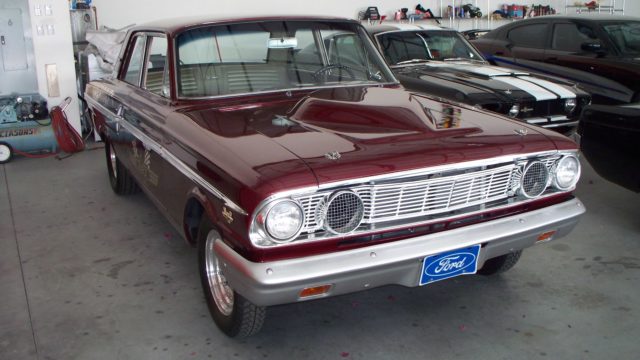
In order to keep pace with the lighter and faster Chevys and Mopars of the day, Fomoco crammed its biggest motor, the big 427, into one of its smallest models, the mid-sized Fairlane 2-door coupe.
This required major front-end frame modifications and a large hood bulge that could accommodate the hi-rise manifold and twin fours, with air induction routed through dummy headlight openings in the grill. It was a factory-produced car that was available from dealerships to anyone willing to pay $3,750. Yet it was clearly designed for racing. It had plexiglass windows, fiberglass body panels, and a sparse interior that lacked the basic comforts, such as armrests, sun-visors, mirrors, sound-dampening insulation, a heater, and radio.
This is incredibly Spartan, especially when compared with modern cars. This car was not one for everyday use, which is why there were only 100 T-bolts sold in 1964.
1969 AMC SC/Rambler
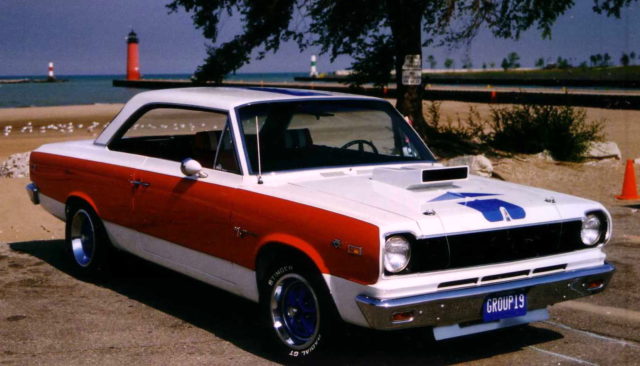
Muscle cars in the U.S. were not limited to the Big Three automakers. American Motors Corp joined forces with Hurst Performance, a well-known parts company, in 1969. They surprised everyone with the SC/Rambler (or the Scrambler). The SC stood for stock-car, but this was anything but.
It was a race-ready production vehicle. They maintained the typical small-car-big-engine strategy when they stuffed their 390 CID 315 hp V8 power-plant into the lightweight Rambler Rogue hardtop coupe. This car would be side-by-side with many of the more popular machines of the day, as stock vehicles regularly turned low 14s at the strip. The price of this vehicle was relatively low at $3000 — this was mostly due to the lack of options (except an AM radio) that was offered.
Each car had a plain grey vinyl interior, a Borg-Warner 4-speed with a Hurst Shifter, and carpeting. It’s bench seats had red, white, and blue headrests. The most striking feature on the car was the bold paint scheme and the large, functional “Ram Air” induction hood scoop. The first 500 units were a base white with a wide red side panel running the length of the car and had a blue stripe running front to back across the top of the car. An arrow graphic pointed towards the scoop. There was lettering near the arrow that noted the engine size. On top of that, the car had two-toned mag wheels. Perhaps unsurprisingly, these cars quickly sold out, and AMC released a second round of 500, which had the “B” trim.
This trim was mostly white with narrow red and blue side stripes. The third round of 512 cars sparks controversy among enthusiasts today — some believe that the third batch goes back to the “A” trim, while others do not. One fact that is not controversial is that of the total 1512 SC/Ramblers built, the majority that survives today have the “A” trim.
1968 Dodge Charger R/T
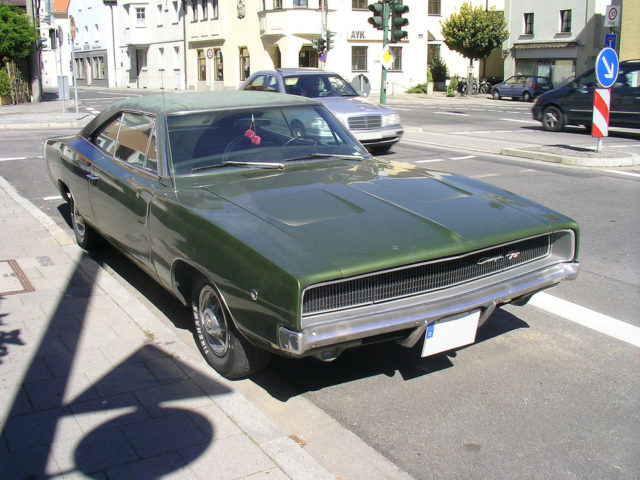
The Dodge Charger stands out with its sleek “coke-bottle” body styling and a mean-looking black-out front grill with hidden headlights sets. The R/T (road/track) designation is what Dodge used to denote a car equally suited for street performance or drag racing.
It had heavy duty suspension with allowed for superior handling, especially compared to the typical muscle car, and due to its a powerful 375 hp 440 Magnum V-8, this car ran the quarter-mile in just under 15 seconds. This list price was about $3,500. Compare that with the R/T Chargers with a Hemi under the hood—those would cost you an extra $600. In total, 96,100 Chargers were built in 1968, with 17,000 of them having the R/T designation.
1969 Ford Fairlane/Torino Cobra
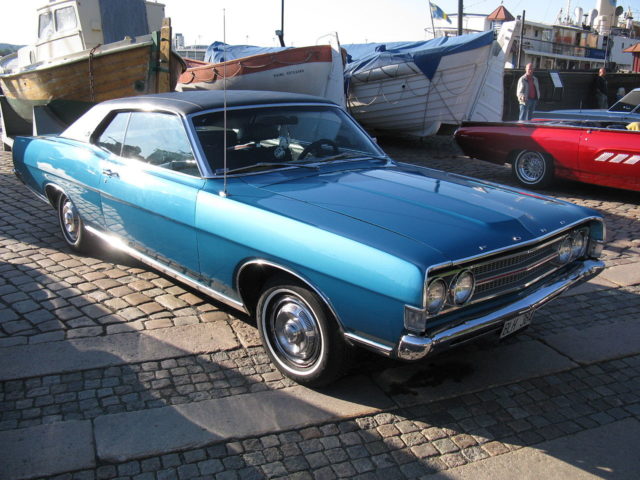
This were simply known as Cobras, according to Ford advertising and sales brochures, and dealers’ winder-sticker. In reality, these cars were Fairlanes, as the Torino designation was an option package for the Fairlane body-code and was not yet a separate model line in 1969.
This naming convention has generated debate in collectors’ circles. That being said, this car is sometimes referred to as the Torino GT or Fairlane Cobra. This line featured two body styles. The first was the hardtop (the formal roof) and the second, more popular was the sports roof fastback. People could choose the Cobra performance package that included 335 HP 428 Cobra Jet V-8 with a Holly 4bbl. The optional Ram Air would not increase horsepower, but it did boost the performance peak to 5,600 rpm. Exclusive to Ford, there was a locking rear differential. Quarter mile times were typically in the 14.5-second range.
Unfortunately, exact production figures are difficult to come by. An estimated 14,000 Cobras were sold in 1969 — the majority of which were the fastback version.
1969 Plymouth Roadrunner
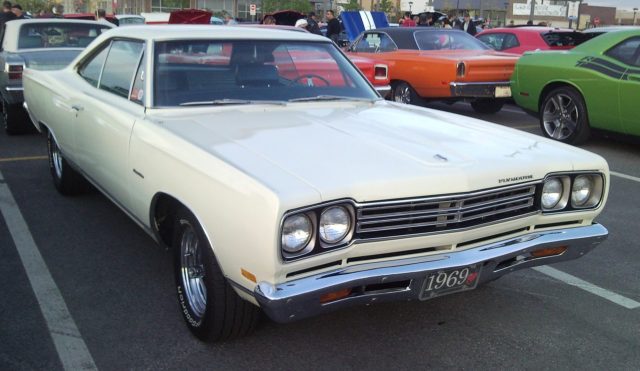
Mopar made a good choice when it made the decision to capitalize on the popularity of muscle cars. They offered the low-priced Roadrunner to the masses, starting in 1968 — although 1969 was a particularly stellar sales year. Clearly aiming at younger audiences, the car was more affordable.
It helped that they licensed the Warner Brothers cartoon character as its namesake and mascot, including the well-known “beep-beep” sound for its horn. Roadrunners were Spartan, in order to keep their price down. Yet these cars weren’t toys, as performance and suspension features were not compromised. Their sticker price was under $3,000, but it quickly went up when the customers added more power options.
Who wants the standard 383 CID mill when you could get a 390 HP 440 with a three-two “Six-pack”? If you really wanted, you could get the 426 Street Hemi engine, which featured Hemi heads, 10.25:1 compression, and two fours. Its rated output boosted to 425 hp at 5,000 rpm and could run the quarter mile in 13.5 seconds with a top speed of over 140 mph. in 1969, over 80,000 units of the various configurations were sold. The most popular were the “no-post” hardtops among collectors.
1966 Oldsmobile 442
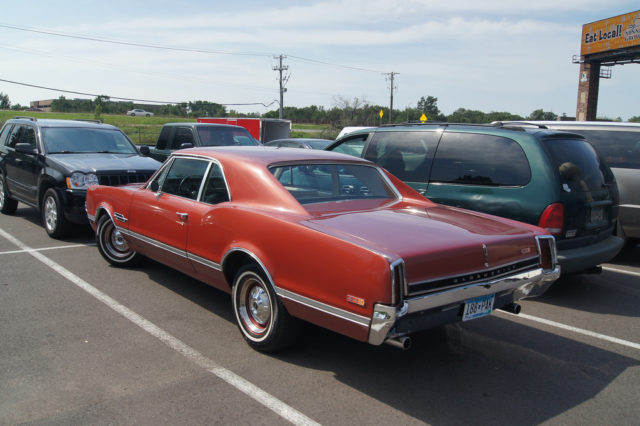
The pre-1968 Olds 442s weren’t technically an actual model but were an option package available for the Oldsmobile Cutlass.
The standard L78 400 CID engine incorporated a single 4bbl carburetor and was rated at 350 HP. For buyers, the favored set-up was the upgraded L69—The L69 was only available for one year and featured a hotter cam and a triple 2bbl carb “tri-power” arrangement. This helped increase the power rating by another ten horses. This car could run quarter miles in 14.8 seconds.
The rarest version was the W-30 version of the tri-power motor that incorporated an air induction system via tubing from the front bumper. In total, there were only fifty-four factory released of the W-30. But another ninety-seven were dealer-modified installations. Today, it is almost impossible to find a W-30, although it is you can find the “regular” tri-power L69’s.
1969 Dodge Coronet R/T and Super Bee
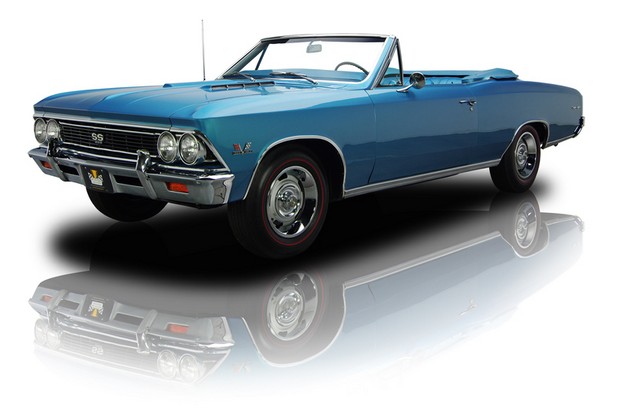
These are actually two versions of the ’69 Coronet muscle car, because they although they are very similar, each one has its own unique advantages. The R/T option designation was available on several Dodge models starting back in 1967.
The Coronet Super Bee was slightly less expensive, so in 1969, many Mopar fans bought that one. Essentially, this version was Dodge’s equivalent to the Plymouth Roadrunner. So, it had very few luxury options — thus making it a lighter weight than the R/T. With 24,000 units sold, Super Bees are also much more common, especially those equipped with the base 383 CID — this was something that was unavailable in the R/T.
A few Super Bees even came with either the bigger 440 six-pack or the 426 twin-four Hemi. On the other hand, the R/T was only offered with the 440 Magnum or the Hemi. These burners routinely ran the quarter-mile in the mid-13s. Perhaps unsurprisingly, the R/T is the rarer of the two models, as only about 6,800 R/Ts were produced in 1969 and 400 of which were the R/T convertible.
1966 Chevrolet Chevelle SS 396
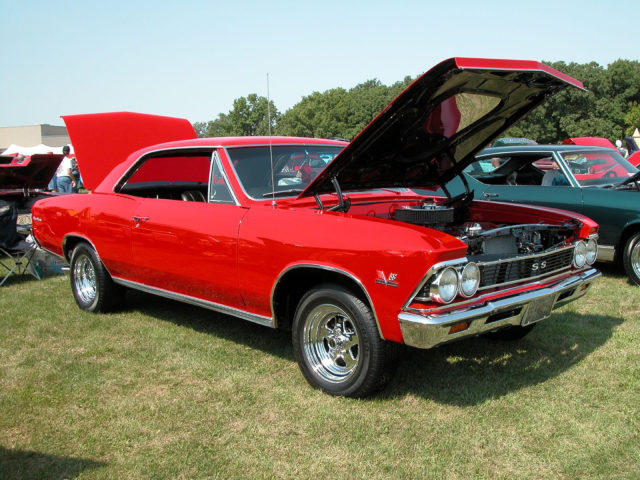
First introduced in 1961, Chevrolet offered a “Super Sport” option package for the Impala and eventually to the other models, including the Chevelle, which was made in 1964. In 1966, the Chevelle took on its new body style that had its most-recognizable feature: the classic forward-thrusting front fenders.
Also included on the Super Sport version was special wheel covers, red-line tires, and a black-out grill that showed off the SS badging to further complement its bold appearance. Regarding its engine, its 396 was basically a de-stroked big-block 409 and was available in several configurations starting with the base-rated 325 HP version. The top option was the RPO L78, which was a mid-year release.
This car generated 375 HP at 56000, thanks to its 11.0:1 compression ratio, a hot cam, and other tweaks. It could go 0-60 in about 6.5 seconds and ran 14.5 second quarters. The Chevelle SS 396s with the L78 engine option are highly prized today because only about 100 units were made in 1966.
1967 Pontiac GTO
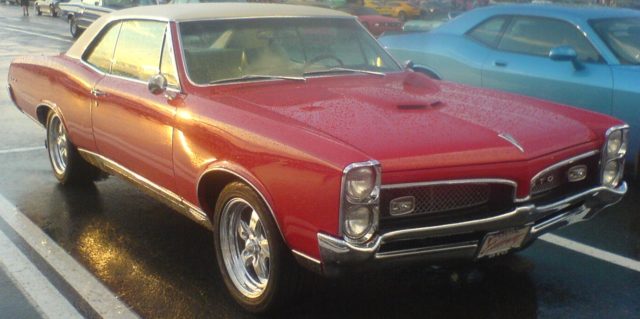
The Goat is considered by many enthusiasts to be the first muscle car. Its classic split grill front-end design is among the most recognizable features of all muscle cars. This car started life as an option package for the 1963 Pontiac LeMans, but the GTO became its own model in 1966.
The first-generation look with the stacked headlight design was thrown out after the model year 1967. The standard equipment included bucket seats, a walnut-grained dash panel, duel exhaust, and a hefty suspension. Under the hood was a 400 CID motor that was bigger than the prior year’s 389. Pontiac also went from a tri-power (three 2bbls) carb setup to a single 4bbl for the 1967 edition.
The top performance option in 1967 was the 400 HO, rated at 360 hp at 5,100 rpm. The peak rpm could be increased by adding the Ram Air induction option. These GTOs typically ran the quarter-mile in the low 14s. in 1967, almost 82,000 GTOs were sold, 13,872 of which had the 400 HO. Ram Air was installed in only 751 of these units.
Bonus!
1963 Plymouth/Dodge 426 Max Wedge
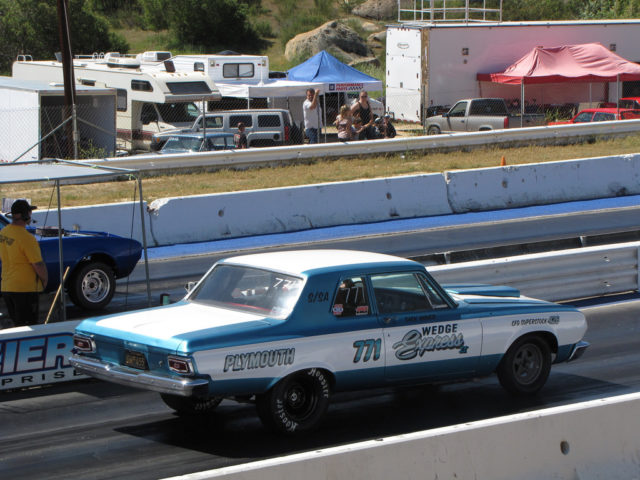
Admittedly, this entry is more about the engine, rather than a specific vehicle model line. Thus, this is a bonus entry. Mopar introduced the 426 RB Wedge (aka Max Wedge) in 1963 as a factory produced “racing only” engine.
It was sold through 1964 until it was replaced by the more famous 426 Hemi. According to sales brochures, cars ordered with the Wedge were “not a street machine” but were “designed to be run in supervised, sanctioned drag-strip competition”.
It was common to order the engine in the Plymouth’s lightest weight model, the Savoy, although it was also found in the more luxurious Belvedere and Sport Fury models. The Dodge equivalent was typically found in the Polara — but it could be ordered in any model offered, even wagons and convertibles. In 1963, 2,130 Mopar vehicles with this motor installation were produced.
Boasting dual quads and 13.5:1 compression, this power-plant produced 425 hp at 5,600 rpm. When the motor was in a lightweight stockers, cars would fly down the strip in a blinding 12 seconds.
